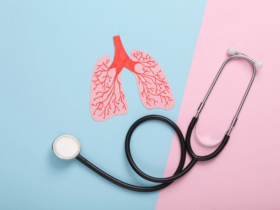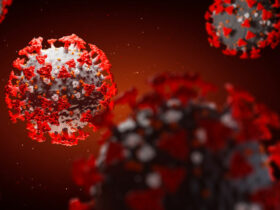United States: Approximately over one-third of adults fail to attain the recommended seven to eight hours of nightly rest — and this dearth of slumber can wield an unexpected influence.
Inadequate sleep may result in what some specialists term a “quiet outbreak” — a condition known as nonalcoholic fatty liver disease (NAFLD), which impacts more than a quarter of American adults, as per the American Heart Association.
What is nonalcoholic fatty liver disease (NAFLD)?
As its label implies, NAFLD is distinguished by the accumulation of fat within the liver.
The chief catalyst is weight gain, coupled with metabolic risk elements such as type 2 diabetes, elevated blood pressure, heightened triglyceride levels, and obstructive sleep apnea, as outlined by Ibrahim Hanouneh, a gastroenterologist with MNGI Digestive Health in Minnesota.
“Excessive alcohol consumption can also trigger fatty liver, but NAFL pertains to fatty liver that arises amidst metabolic syndrome and weight gain in the absence of excessive alcohol consumption — hence the moniker ‘nonalcoholic,’” Hanouneh informed Fox News Digital.
This ailment is also recognized as MASLD (metabolic dysfunction associated with steatotic liver disease), which denotes the correlation between fatty liver and metabolic syndrome.
A familial background of fatty liver can also escalate the vulnerability, noted Hanouneh, who is additionally a co-author of the book “Regenerative Health: Discover Your Metabolic Type and Renew Your Liver for Life,” as reported by Fox News.
NAFL is recognized as a “quiet outbreak” because it frequently lacks symptoms.
“In certain studies, fatty liver has impacted 25 percent to 33 percent of the general populace — nearly one out of four individuals — yet the vast preponderance of individuals exhibit no symptoms at all, particularly in the nascent stages,” articulated Hanouneh.
Certain individuals may exhibit nonspecific symptoms, such as weariness, hazy recollection, and abdominal discomfort.
“By and large, fatty liver disease does not induce significant symptoms until it is tardy — for instance when the patient has already manifested cirrhosis or liver cancer,” Hanouneh noted.
Fatty liver disease is associated with an escalated risk of liver cirrhosis and liver cancer.
“The vast majority of individuals exhibit no symptoms at all, particularly in the nascent stages.”
“NAFLD has emerged as the foremost indication of liver transplantation and the principal cause of liver cancer in the Western world,” remarked Hanouneh.
Patients afflicted with this ailment are also at an elevated risk of cardiovascular episodes, such as heart attacks and strokes, he cautioned.
“Some studies also propose that patients with NAFL are at an elevated risk of contracting type 2 diabetes,” he appended, as reported by Fox News.
Not all individuals with NAFLD encounter hepatic impairment. Nonalcoholic steatohepatitis (NASH), the more severe manifestation, leads to swelling or inflammation of the liver and impairment of liver cells, as outlined by the American Liver Foundation’s website.
This can ultimately culminate in fibrosis, or scarring, of the liver.
Connection between sleep and NAFLD
Insufficient high-quality sleep has been correlated with weight gain, a surge in appetite, and adverse blood sugar regulation in numerous studies, according to Kristin Kirkpatrick, a registered dietitian at Cleveland Clinic and co-author of “Regenerative Health.”
“Insulin resistance represents a major risk factor for atypical quantities of fat in the liver,” articulated Kirkpatrick.
Jeopardy is particularly pronounced in postmenopausal women, she remarked. One study found that chronic abbreviated sleep duration led to a 20% escalation in insulin levels among that cohort, compared to 15% overall.
“The strain on the body engendered by a dearth of sleep can engender adverse metabolic alterations that ultimately may culminate in NAFLD,” Kirkpatrick expressed.
The authority also alluded to a recent study in JAMA (the Journal of the American Medical Association) demonstrating that abbreviated sleep duration heightened the hazard for type 2 diabetes.
“Though some hazards could be mitigated by a wholesome diet, a majority could not be counteracted by a nutrient-laden dietary regimen,” she expounded.
“Type 2 diabetics undergo a significant escalation in risk of developing NAFLD.”
Maintaining consistent sleeping patterns may aid in weight regulation, Kirkpatrick relayed to Fox News Digital.
“That signifies retiring and arising at identical times on weekdays and weekends.”
Screening, intervention, and prevention
Due to the “silent” disposition of NAFLD, specialists emphasized the significance of screening for fatty liver in patients with predisposing factors — even if there are no indicators or manifestations of liver malady.
“NAFLD represents a preventable ailment,” Hanouneh informed Fox News Digital.
“It is additionally a remediable ailment at incipient stages.”
Three principal varieties of examinations are employed to diagnose the condition, as per the JAMA Network.
Hematological assays can quantify inflammation in the liver, as reported by Fox News.
Imaging evaluations, such as ultrasonography or computed tomography, can visually assess the appearance of the organ.
“NAFLD is a preventable ailment — and remediable at incipient stages.”
There are also some novel examinations that gauge the quantity of fat in the liver — “such as transient elastography, an ultrasound-based test that quantifies how rigid the liver is” — but they may not be exceedingly dependable for diagnosing more advanced liver malady, JAMA Network stated.
For those who have received a diagnosis, a low-carbohydrate dietary regimen is pivotal in managing fatty liver disease, concurred experts.
“Studies suggest that a low-carb dietary regimen that induces weight loss of 5 percent to 10 percent can potentially reverse fatty liver disease,” Hanouneh stated, according to Fox News.
“Additionally, curtail or abstain from alcohol contingent on the degree of fatty liver disease.”
It is likewise imperative to follow up with a healthcare professional to manage metabolic risk factors, he stressed — particularly type 2 diabetes, which is “indispensable in the management of fatty liver disease.”
For individuals with NAFLD, Hanouneh also recommended integrating regular physical activity, particularly interval training, thrice weekly.
Coffee has also exhibited potential benefits for fatty liver.
“I typically advocate one to two servings of unsweetened coffee per day if feasible,” Hanouneh articulated.















